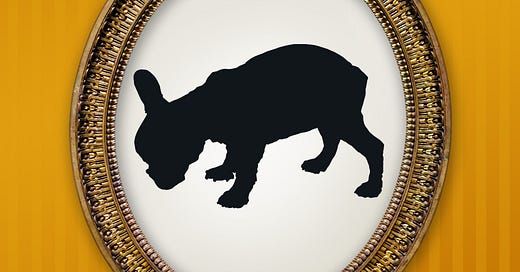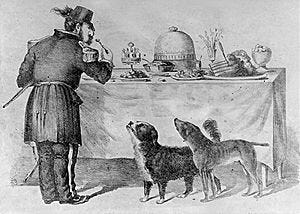Welcome, I’m Mary Louisa Locke, the author of the USA Today best-selling Victorian San Francisco Mystery series and the Caelestis Science Fiction series. In this daily newsletter, I reflect on my life as an indie author trying to age gracefully. Occasionally, I will also publish some of my shorter fiction in this newsletter to read for free.
Daily Diary, Day 1644:
Throughout the month of March, I will be offering, for free, the sixth short story in my Victorian San Francisco mystery series, Dandy’s Discovery. But first I am going to discuss the purpose of writing this particular story as well as republish some information from historical tidbits posts about pets that I wrote previously.
Like Beatrice Bests the Burglars, this next short story is also set in the boardinghouse, a little later in the summer of 1881. One of the purposes of the Dandy’s Dicovery was to feature the three young boarders in the house, who would be out of school at this time of year. They are Emmaline Fournier, who is the elderly dressmakers’ niece; Ian Hennessey, Kathleen’s youngest brother; and Jamie Hewitt, the young son of the teacher, Barbara Hewitt. This story also gave me a chance to give a speaking role to the young Irish servant, Tilly, who has recently started to work full-time and live in the boardinghouse itself. And of course, I always enjoy giving my favorite minor character, the Boston Terrier Dandy, a prominent role.
Until I started writing these short stories, I never realized how important pets in general, and dogs specifically, were to Victorian families. From my research, I discovered that among the residents in San Francisco, like many other nineteenth-century urban dwellers, there was a good deal of ambivalence about dogs in the city. Until recently, most Americans had been living in rural areas where animals were bred for practical economic reasons (aids in hunting or herding). Not surprisingly, the top ten breeds in the 1880s, according to the American Kennel Club, were all sporting or working dogs. (English Setters, Irish Setters, Pointers, Irish Water Spaniels, Gordon Setters, Beagles, Collies, Fox Terriers, Dachshunds, and Mastiffs.)
However, there was a growing concern that the packs of wild dogs that roamed city streets were a threat to public welfare. This was a legitimate fear, given there wasn’t a vaccine for rabies yet and occasionally dogs that were bred for fighting attacked children. As a response, in 1862, San Francisco passed a city ordinance that required that dogs be on a leash or muzzle. The city hired dog catchers to round up stray dogs and put them in the City Pound until the owner paid a fine. Dogs not redeemed were executed. This will become an issue in a later novella I wrote, Dandy and the Dognappers.
On the other hand, as more Americans moved away from rural areas, they began to adopt a new positive attitude towards dogs as pets. This helps explain the popularity of two stray dogs, Bummer and Lazarus, who many San Franciscans took to their hearts in the early 1860s. These two canines were made famous by the local newspapers that stressed their loyalty and bravery. This favorable attitude towards dogs was reflected in the formation of a local chapter of the Society for the Prevention of Cruelty to Animals in 1868.
Recent research on Victorian attitudes towards pets found the middle classes at the forefront of a trend that had previously been associated with the elite. One researcher, Jane Hamlett states that “Writers and artists in the 19th century assigned a new ‘moral value’ to pets, and consequently saw keeping them as beneficial for children. Pet ownership began to be seen as character building, particularly for boys, because it taught children to be caring and responsible. Pets were also thought to enhance the domesticity of a home for a potentially valuable social purpose. The Victorians were very interested in the home and domestic life, and bringing up children was seen as very important for creating the right kind of morality in society…And one of the things that children could do to develop morality was to keep a pet – so you get quite a lot of advice manuals from the mid-19th century onwards suggesting that children should keep pets to improve themselves and their moral qualities.”
Dogs weren’t the only animals to be kept as pets in the Victorian era. Rabbits and birds were popular, as well as cats, and that will be the subject of my next post introducing the short story, Dandy’s Discovery.
Everything I publish in this newsletter is available to anyone who subscribes, but I am always pleased when someone shows their appreciation for what I am writing by clicking the button below to upgrade to paid, thereby providing me more resources so I can spend more time writing my fiction and less time marketing. In addition, please do click on the heart so I know you’ve been to visit and/or share with your friends, and I always welcome comments! Thanks!






Dogs have been around all my life! Starting with a farm dog in 1938. He was a scruffy lovable mutt named Stub.